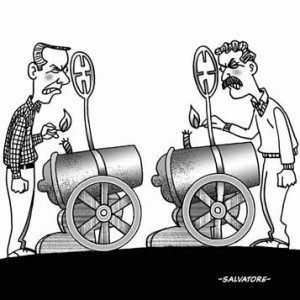And how does one manage corporate reputation, if you please?
When I first started working on this corporate reputation thing (and a lot of water has passed under the bridge since then), I was invited to make a presentation to the management committee of one of the main business units of the company I was working for. I shall never forget the way I was introduced:
"Alberto is in charge of corporate reputation, and his problem is that apparently we’re not doing too well in some of the rankings. He’s going to tell us about his problem, and we’ll see if there’s anything we can do to help him.”
I was in the firing line: the problem was mine! And on top of that the problem consisted in scoring, or not scoring, better in the rankings! All in all, a difficult situation, because: (a) it didn’t concern them: if I was in charge of reputation, it must be my problem; (b) it had to do not with management, but with communication, rankings, you know, that sort of thing; and (c) the phrase “anything we can do to help” relegated me to the position of a supplicant as opposed to someone sharing a problem.
Years later, things have changed. Now I can recount very different experiences. But this contribution aims not so much to tell good news as to look at how to bring about change. Managing reputation can be summarised under four headings:
1. Identify the core dimensions that constitute reputation. For this, we used RepTrak, and now we can say that the pieces that go together to form a company’s reputation in the consumer’s imagination are an accumulation of perceptions about these variables: products and services offered; being a good place to work; integrity; innovative capacity; commitment to society; financial results; and the vision of its management team. This means quite simply that reputation management is in the hands of the whole company, not of a single department or person.
2. “Vertical management” of a functional unit. In general, the reputation manager focuses on one pair of variables from the RepTrak diagram: integrity/ governance and citizenship. Therefore there is a clear relationship between reputation and CSR. But a word of warning - this responsibility is not merely an exercise in communication: it’s something different altogether. It involves identifying important projects in the company, setting objectives for them, monitoring them and promoting them with related areas. In fact, here it is easy to set objectives for the team: objectives linked to the progress of projects (for example, number of audits carried out in the supply chain)
3. “Diagonal management” with the communication areas. One thing seems clear: RepTrak identifies a number of core dimensions for generating positive opinions in consumers’ imagination. If this is so, the challenge is then to identify these dimensions and work with the communications area to give them the best ammunition for generating positive impacts. In other words: company information can and must be packaged so as to climb the RepTrak ladder, either by unearthing and displaying the company’s “hidden jewels”, or by demolishing any “false myths” that there might be about the company. The reputation manger’s objectives here are in his ability to create this ammunition for the communications areas (for example, such information as has been identified within the company). And that can be measured and assessed.
 4. “Horizontal” management with all areas of the company. It is clear that an HR policy builds reputation; that a policy of innovation builds reputation; that a sales or after-sakes policy also builds reputation. The problem comes when you have to go and tell these departments that what they are doing (or not doing) is creating reputational tension. How can you go to see a sales manager and “inspect” his work? Or an HR manager? That’s the problem with this concept. Not to be an inspector or a notary but to add value to the manager, knowing that he has the sword of Damocles hanging over him in the shape of short-term results, while you have to try to build a long-term reputation. Having given it a lot of thought, I finally came up with these guideline objectives that you can reasonably set for your reputation team:
4. “Horizontal” management with all areas of the company. It is clear that an HR policy builds reputation; that a policy of innovation builds reputation; that a sales or after-sakes policy also builds reputation. The problem comes when you have to go and tell these departments that what they are doing (or not doing) is creating reputational tension. How can you go to see a sales manager and “inspect” his work? Or an HR manager? That’s the problem with this concept. Not to be an inspector or a notary but to add value to the manager, knowing that he has the sword of Damocles hanging over him in the shape of short-term results, while you have to try to build a long-term reputation. Having given it a lot of thought, I finally came up with these guideline objectives that you can reasonably set for your reputation team:
- (a) share diagnostics and train them in the culture of reputation;
- (b) pass on to them in a timely and appropriate manner the information you have on the company’s reputational profile in its sphere of activity (reputation studies);
- (c) provide the manager with studies on the correlation between its business indicators (whatever these may be) and the reputation indicators (for example, there is a clear correlation between customer satisfaction and reputation);
- and (d) offering the manager of each area in the company practical case studies of other companies’ (or your own) successes and failures in given situations; creating a kind of knowledge centre and sharing these cases with all the affected areas is usually a good thing to do.












